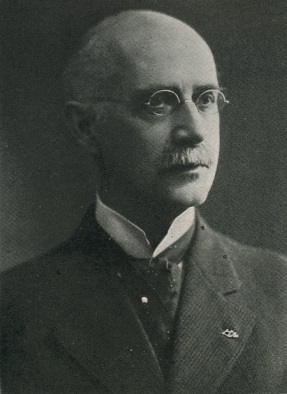
Vol. 5, No. 13
On March 30, 1842, Dr. Crawford W. Long of Jefferson, Georgia, became the first physician to administer diethyl ether to remove a tumor from the neck of James Venable. Four years later, Dr. William T. G. Morton would administer the same inhaled anesthesia to extract a tooth from Eben Frost of Boston, Massachusetts. For centuries, physicians have experimented with various chemicals to perfect the way in which medical procedures are conducted, but also to change the way in which diseases and symptoms are treated.
Francis Edward Stewart was born September 13, 1853, to Johnathan Severance Stewart and Ada E. Nichoson at Albion, New York. Unbeknownst to his parents when he was born in the home of his maternal grandfather and pioneer physician, Dr. Orson Nichoson, Stewart would become one of the foremost experts on pharmacology and a pioneer in the pharmaceutical industry. The family relocated to Philadelphia in 1872 when Jonathan Stewart accepted a position as superintendent of the American Dredging Company in that location. It was here that Francis would begin his education in medicine and pharmacology.
Previously studying at the Cortland County Academy at Homer, New York and then at Oberlin College in Ohio, Francis Stewart enrolled at the Philadelphia College of Pharmacy where he graduated with the class of 1876. Continuing down the path of higher education, Stewart graduated in 1879 from Jefferson Medical College and conducted post-graduate work at the University of Pennsylvania. At the conclusion of his schooling, Stewart moved to New York City where he spent time working with the Committee of Alms Houses for the County of New York and conducted work with the State Charity’s Aid Association.
For the majority of his career, Stewart focused his efforts primarily in pharmacology, making important developments in the pharmaceutical industry and filing numerous patents, even as a student. He became a strong supporter of placing the pharmacal and pharmaco-chemical industries under the control of the federal government for the purpose of introducing new remedies and overseeing medical advancements. Despite developing a comprehensive outline of the plan, the idea was rejected by Congress due to competing commercial interests.
Stewart pushed Parke, Davis & Company (now a subsidiary of Pfizer) to develop a scientific department where the company would perfect clinical trial methods for new medications, and assisted in the establishment of a Council on Pharmacy and Chemistry in conjunction with the American Medical Association. In 1885, Stewart relocated to Wilmington, Delaware, where he held a position as the leader of the University of Pennsylvania’s university extension at that location.
Among other notable accomplishments, he became the chairman of the Medical Board of Merck & Company and the first editor-in-chief of Merck’s Archives of Materia Medica and Drug Therapy. He served as a lecturer at the Women’s Medical College of Pennsylvania, a lecturer at Jefferson Medical College, and a professor at the Philadelphia College of Pharmacy. His expertise expanded into the realm of law when the American Pharmaceutical Association appointed him chairman of a committee to revise patent laws.
His obituary read, “Word has been received here of the death of Dr. Francis Edward Stewart, 87, a native of Albion and a physician and pharmacist of national importance, in Germantown, Pa., on Feb. 20, 1941…among notable patients of Dr. Stewart were President Benjamin Harrison, John Wanamaker and John D. Rockefeller.”
A life committed to advancement in pharmacology, his hopes of federal oversight of the pharmaceutical industry was realized over 20 years after he first introduced the idea in 1881. The passing of the Pure Food and Drug Act in 1906, a result of the exposés of muckraking journalists, mandated labeling drugs with active ingredients and set acceptable purity levels for medications.